#Vol 191
Text

Behold! A Family Tree!
The compression makes it a bit hard to read so here's also a link to the pdf version if you want to zoom in with better quality.
Please be warned that this does contain spoilers for the entire run of the original Cardcaptor Sakura Manga (and so includes some details that weren't worked into the anime).
But that aside, here is the Implied Family Tree that CLAMP are selling us in Tsubasa for now. It's the path the audience are currently being led down, even if I have strong suspicions that the reality will end up being much more complicated.
For ease of use, if you cut the chart in half after the box that says "Currently Implied Children" you can easily separate Cardcaptor Sakura from Tsubasa with no casualties! Will this be handy for future edits? Probably!
For now please enjoy the summary of how the stories are implied to be connected as of the end of Tsubasa Volume 24.
Also I have just realised that I forgot to add in Maru and Moro. Please mentally add them in the top left. :D
#Accepting feedback just in case I forgot someone#I am growing suspicious that the Tsubasa side might become a circle#But shh enough of that#liveblogging the reservoir chronicle#Tsubasa#Cardcaptor Sakura#Vol 191#Maru and Moro I'm so sorry#Maybe in Version 2
111 notes
·
View notes
Photo

lol don’t think about it too hard, man
#wallylinda#carter hall#linda park#dc comics#wally west#hawkman#flashfam#flash#TF vol 2#issue 191#dc
53 notes
·
View notes
Text

I typed up the Pentiment bibliography for my own use and thought I’d share it here too. In case anyone else is fixated enough on this game to embark on some light extra-curricular reading
I haven’t searched for every one of these books but a fair few can be found via one of the following: JSTOR / archive.org / pdfdrive.com / libgen + libgen.rocks; or respective websites for the journal articles.
List below the cut!
Beach, Alison I, Women as Scribes: Book Production and Monastic Reform in Twelfth-Century Bavaria. Cambridge University Press, 2004
Berger, Jutta Maria. Die Geschichte der Gastfreundschaft im hochmittelalterlichen Mönchtum die Cistercienser. Akademie Verlag GmbH, 1999
Blickle, Peter. The Revolution of 1525. Translated by Thomas A. Brady, Jr. and H.C. Erik Midelfort. The Johns Hopkins University Press, 1985
Brady, Thomas A., Jr. “Imperial Destinies: A New Biography of the Emperor Maximilian I.” The Journal of Modern History, vol.62, no.2, 1990. pp. 298-314
Brandl, Rainer. “Art or Craft? Art and the Artist in Medieval Nuremberg.” Gothic and Renaissance Art in Nuremberg 1300-2550. The Metropolitan Museum of Art, 1986
Byars, Jana L., “Prostitutes and Prostitution in Late Medieval Barcelona.” Masters Theses. Western Michigan University, 1997
Cashion, Debra Taylor. “The Art of Nikolaus Glockendon: Imitation and Originality in the Art of Renaissance Germany.” Journal of Historians of Netherlandish Art, vol.2, no.1-2, 2010
de Hamel, Christopher. A History of Illuminated Manuscripts. Phaidon Press Limited, 1986
Eco, Umberto. The Name of the Rose. Translated by William Weaver. Mariner Books, 2014
Eco, Umberto. Baudolino. Translated by William Weave. Boston, Mariner Books, 2003
Fournier, Jacques. “The Inquisition Records of Jacques Fournier.” Translated by Nancy P. Stork, San Jose University, 2020
Geary, Patrick. “Humiliation of Saints.” In Saints and their cults: studies in religious sociology, folklore, and history. Edited by Stephen Wilson. Cambridge University Press, 1985. pp. 123-140
Harrington, Joel F. The Faithful Executioner: Life and Death, Honor and Shame in the Turbulent Sixteenth Century. Farrar, Straus and Giroux, 2013
Hertzka, Gottfied and Wighard Strehlow. Große Hildegard-Apotheke. Christiana-Verlag, 2017
Hildegard von Bingen. Physica. Edited by Reiner Hildebrandt and Thomas Gloning. De Gruyter, 2010
Julian of Norwich. Revelations of Divine Love. Translated by Barry Windeatt. Oxford University Press, 2015
Karras, Ruth Mazo. Sexuality in Medieval Europe: Doing Unto Others. Routledge, 2017
Kerr, Julie. Monastic Hospitality: The Benedictines in England, c.1070-c.1250. Boydell Press, 2007
Kieckhefer, Richard. Forbidden rites: a necromancer's manual of the fifteenth century. Sutton, 1997
Kümin, Beat and B. Ann Tlusty. The World of the Tavern: Public Houses in Early Modern Europe. Routledge, 2017
Ilner, Thomas, et al. The Economy of Dürnberg-Bei-Hallein: an Iron Age Salt-mining Centre in the Austrian Alps. The Antiquaries Journal, vol. 83, 2003. pp. 123-194
Làng, Benedek. Unlocked Books: Manuscripts of Learned Magic in the Medieval Libraries of Central Europe. The Pennsylvania State University Press, 2008
Lindeman, Mary. Medicine and Society in Early Modern Europe. Cambridge University Press, 2010
Lowe, Kate. “'Representing' Africa: Ambassadors and Princes from Christian Africa to Renaissance Italy and Portugal, 1402-1608.” Transactions of the Royal Historical Society Sixth Series, vol. 17, pp. 101-128
Meyers, David. “Ritual, Confession, and Religion in Sixteenth-Century Germany.” Archiv für Reformationsgeschichte, vol. 89, 1998. pp. 125-143
Murat, Zuleika. “Wall paintings through the ages: the medieval period (Italy, twelfth to fifteenth century).” Archaeological and Anthropological Sciences, vol. 12, no. 191. Springer, October 2021. pp. 1-27
Overty, Joanne Filippone. “The Cost of Doing Scribal Business: Prices of Manuscript Books in England, 1300-1483.” Book History 11, 2008. pp. 1-32
Page, Sophie. Magic in the Cloister: Pious Motives, Illicit Interests and Occult Approaches to the Medieval Universe. The Pennsylvania State University Press, 2013
Park, Katharine. “The Criminal and the Saintly Body: Autopsy and Dissection in Renaissance Italy.” Renaissance Quarterly, vol. 47, no. 1, Spring 1994. pp. 1-33
Rebel, Hermann. Peasant Classes: The Bureaucratization of Property and Family Relations under Early Habsburg Absolutism, 1511-1636. Princeton University Press, 1983
Rublack, Ulinka. “Pregnancy, Childbirth, and the Female Body in Early Modern Germany.” Past & Present, vol. 150, no. 1, February 1996. pp. 84-110
Salvadore, Matteo. “The Ethiopian Age of Exploration: Prester John's Discovery of Europe, 1306-1458.” Journal of World History, vol. 21, no. 4, 2011. pp. 593 - 627
Sangster, Alan. “The Earliest Known Treatise on Double Entry Bookkeeping by Marino de Raphaeli”. The Accounting Historians Journal, vol. 42, no. 2, 2015. pp. 1-33.
Throop, Priscilla. Hildegard von Bingen's Physica: The Complete English Translation of Her Classic Work on Health and Healing. Healing Arts Press, 1998
Usher, Abbott Payson. “The Origins of Banking: The Primitive Bank of Deposit, 1200-1600.” The Economic History Review, vol. 4, no. 4, 1934. pp. 399-428
Waldman, Louis A. “Commissioning Art in Florence for Matthias Corvinus: The Painter and Agent Alexander Formoser and his Sons, Jacopo and Raffaello del Tedesco.” Italy and Hungary: Humanism and Art in the Early Renaissance. Edited by Péter Farbaky and Louis A. Waldman, Villa I Tatti, 2011. pp. 427-501
Wendt, Ulrich. Kultur und Jagd: ein Birschgang durch die Geschichte. G. Reimer, 1907
Whelan, Mark. “Taxes, Wagenburgs and a Nightingale: The Imperial Abbey of Ellwangen and the Hussite Wars, 1427-1435.” The Journal of Ecclesiastical History, vol. 72, no. 4, 2021, pp. 751-777.e
Wiesner-Hanks, Merry E. Women and Gender in Early Modern Europe. Cambridge University Press, 2008
Yardeni, Ada. The Book of Hebrew Script: History, Paleography, Script Styles, Calligraphy & Design. Tyndale House Publishers, 2010
#pentiment#Pentiment bibliography#some of these books give me strong first-year undergrad vibes#even just seeing ulinka rublack’s name gives me semi-traumatic flashbacks to cultural history seminars#would I cope better with it now that I don’t have to write essays each week on the topic?#¯\_ (ツ)_/¯#probs not tbh#also it probably would have been a lot faster if I could have pulled this list from game files somehow#but I do not know how to do that :)))#Anyway I hope this is of use to somebody at some point#I wish you all a very happy reading about the primitive deposit banking system everybody 😌
762 notes
·
View notes
Text

Portada de Fantastic Four Vol 1 #191 (1977) por George Pérez y Joe Sinnott.
#cómics#portada de cómic#comic book cover art#marvel comics#fantastic four#4 fantásticos#george perez#joe sinnott
92 notes
·
View notes
Photo

💕 Sparklecare Update 💕
VOL 3: Pages 191-193 🌈 Click here to read!
✨ Support us on Patreon!
✨ Updates Mondays & Thursdays
180 notes
·
View notes
Text
Collaborative Masterpost on Saint-Just
Primary Sources
Oeuvres complètes available online: Volume 1 and Volume 2
A few speeches
L'esprit de la révolution et de la constitution de la France (1791)
Transcription of the Fragments sur les institutions républicaines (1800) kept at the BNF by Pierre Palpant
Alain Liénard's edition and transcription of his works in Théorie politique (1976)
Some letters kept in Papiers inédits trouvés chez Robespierre, Saint-Just, Payan, etc. (1828)
Fragment autographe des Institutions républicaines
Une lettre autographe signée de Saint-Just, L. B. Guyton et Gillet (not his writing but still interesting)
Two files at the BNF with his writing (and other strange random stuff):
Notes et fragments autographes - NAF 24136
Fragments de manuscrits autographes, avec pièces annexes provenant de Bertrand Barère, de V. Expert et d'H. Carnot - NAF 24158
Albert Soboul's transcription of the Institutions républicaines + explanation of what's in these files at the BNF
Anne Quenneday's philological note on the manuscript by Saint Just, wrongly entitled De la Nature (NAF 12947)
Masterpost (inventory, anecdotes, etc.) - by obscurehistoricalinterests
Chronology
Chronology from Bernard Vinot's biography
Testimonies
Élisabeth Duplay-Le Bas on Saint-Just, as reported by David d'Angers - by frevandrest and robespapier
Élisabeth Duplay-Le Bas corrects Alphonse de Lamartine’s Histoire des girondins (1847) - by anotherhumaninthisworld
Many testimonies by contemporaries (in French) on antoine-saint-just.fr
Representations
Everything Wrong with Saint-Just's Introductory Scene in La Révolution française (1989) - by frevandrest
On Saint-Just's strange representation of "throwing tantrums" - by saintjustitude and frevandrest
Saint-Just as "goth/emo boy"? - by needsmoreresearch, frevandrest and sieclesetcieux
Recommended Articles
Bernard Vinot:
"La révolution au village, avec Saint-Just, d'après le registre des délibérations communales de Blérancourt", Annales historiques de la Révolution française, No. 335, Janvier-Mars 2004, p. 97-110
Alexis Philonenko:
"Réflexions sur Saint-Just et l'existence légendaire", Revue de Métaphysique et de Morale, 77e Année, No. 3, Juillet-Septembre 1972, p. 339-355
Miguel Abensour:
"Saint-Just, Les paradoxes de l'héroïsme révolutionnaire", Esprit, No. 147 (2), Février 1989, p. 60-81
"Saint-Just and the Problem of Heroism in the French Revolution", Social Research, Vol. 56, No. 1, "The French Revolution and the Birth of Modernity", Spring 1989, p. 187-211
"La philosophie politique de Saint-Just: Problématique et cadres sociaux". Annales historiques de la Révolution française, 38e Année, No. 183, Janvier-Mars 1966, p. 1-32. (première partie)
"La philosophie politique de Saint-Just: Problématique et cadres sociaux", Annales historiques de la Révolution française, 38e Année, No. 185, Juillet-Septembre 1966, p. 341-358 (suite et fin)
Louise Ampilova-Tuil, Catherine Gosselin et Anne Quennedey:
"La bibliothèque de Saint-Just: catalogue et essai d'interprétation critique", Annales historiques de la Révolution française, No. 379, Janvier-mars 2015, p. 203-222
Jean-Pierre Gross:
"Saint-Just en mission. La naissance d'un mythe", Annales historiques de la Révolution française, Année 1968, no. 191 p. 27-59
Marie-Christine Bacquès:
"Le double mythe de Saint-Just à travers ses mises en scène", Siècles, no. 23, 2006, p. 9-30
Marisa Linton:
"The man of virtue: the role of antiquity in the political trajectory of L. A. Saint-Just", French History, Volume 24, Issue 3, September 2010, p. 393–419
Misc
Saint-Just in Five Sentences - by sieclesetcieux
On Saint-Just's Personality: An Introduction - by sieclesetcieux
Pictures of Saint-Just's former school, with the original gate - by obscurehistoricalinterests
Saint-Just vs Desmoulins (the letter to d'Aubigny and other details) - by frevandrest
Saint-Just's sisters - by frevandrest
On Thérèse Gellé and Henriette Le Bas - by frevandrest
Saint-Just and Gellé being godparents - by frevandrest and robespapier
On Saint-Just "stealing" and running away to Paris and the correction house - by frevandrest and sieclesetcieux
How was/is Saint-Just pronounced - Additional commentary in French by Anne Quenneday
#saint-just#antoine saint just#saint just#to be updated#masterpost#refs#sources#frev sources#testimonials and commentaries
111 notes
·
View notes
Text
Moon Knight Fail Compilation (Part Five)
1. Local crimefighter tries to punch a ghost; “Box,” Moon Knight (Vol. 7/2014), #3.
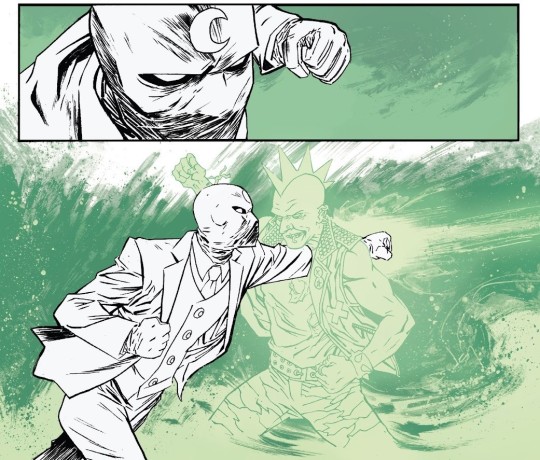
2. Local crimefighter doesn't actually have a job; “Scarlet,” Moon Knight (Vol. 7/2014), #5.

3. Local crimefighter gets stranded in deep space (???!?); “Secret Warriors,” Original Sin (Vol. 1/2014), #4.

4. Local crimefighter yells at ghosts - doesn't even succeed in getting them to leave; “Footprints,” Moon Knight (Vol. 7/2014), #13.
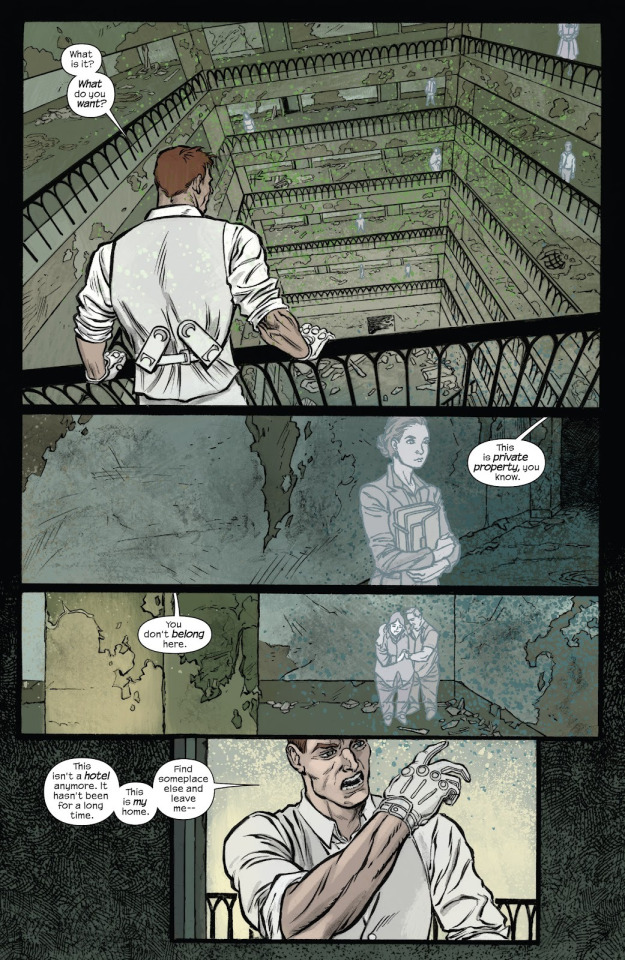


5. Local crimefighter might as well have slipped on a banana peel; “Footprints,” Moon Knight (Vol. 7/2014), #13.
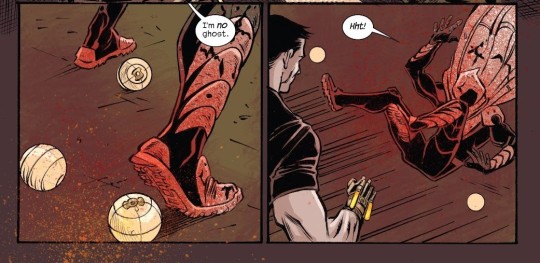
6. Very brave local crimefighter makes boasts towards fleeing enemies; “Old Gods’ Favors” Moon Knight (Vol. 7/2014), #14.

7. Local crimefighter wears white in a junkyard; “Old Gods’ Favors” Moon Knight (Vol. 7/2014), #14.

8. Local crimefighter knows no better time than "imminent fiery death" to make a bad pun; “Angels,” Moon Knight (Vol. 7/2014), #16.

9. Highly-trained local crimefighter nearly taken out with a broom handle; “Welcome to New Egypt: Part 3 of 5,” Moon Knight (Vol. 8/2016), #3.

10. Somehow not the only time local crimefighter has stripped down to his boxers while fighting crime; “Crazy Runs in the Family: Part 4,” Moon Knight (Vol. 8/2016), #191.
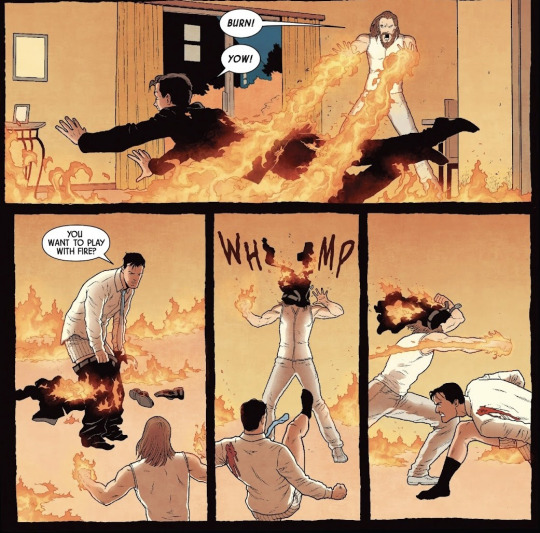

11. Local crimefighter's own daughter says he smells; “Crazy Runs in the Family: Part 4,” Moon Knight (Vol. 8/2016), #191.


12. Local crimefighter continues to have the worst kept "secret" identity in the crimefighting community; Moon Knight (Vol. 8/2016), #196.
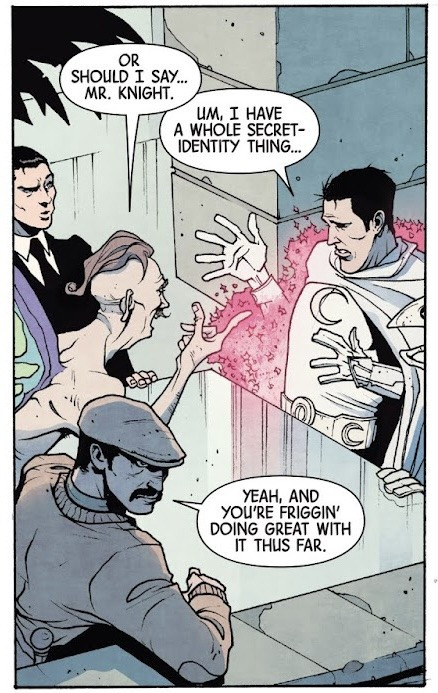
13. Local crimefighter literally gets airdropped in; “Acts of Evil,” Moon Knight Annual (Vol. 2/2019), #1.

14. tbh everything from Marc's appearances in Contagion could be described as "Local crimefighter turns out to have even less of a plan than originally believed;" Contagion (Vol. 1/2019), #4.


15. See what I mean?; Contagion (Vol. 1/2019), #5.

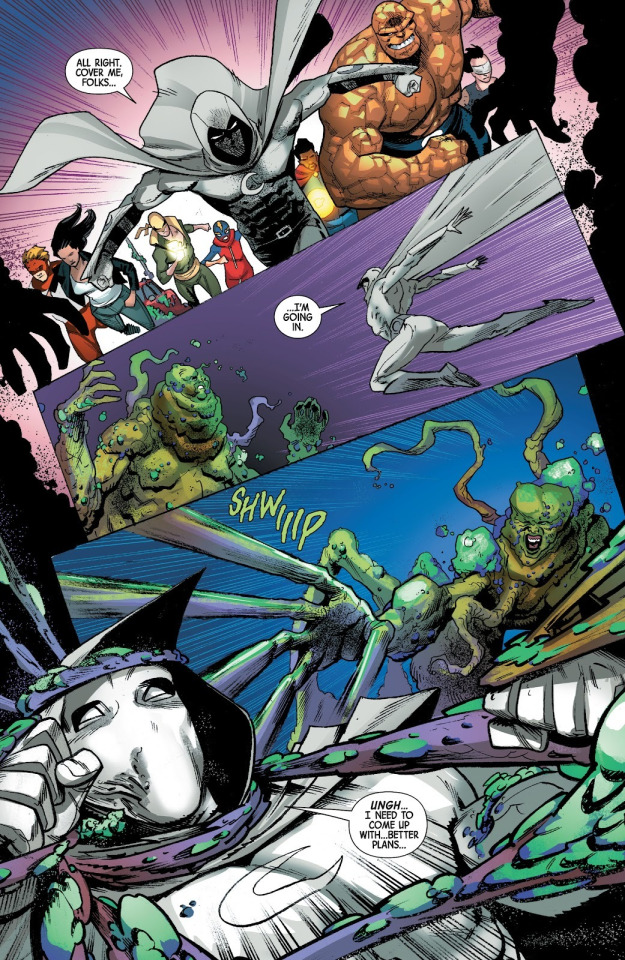
16. It's a miracle this worked honestly; Contagion (Vol. 1/2019), #5.

17. Local crimefighter has learned nothing about the need for proper planning; Contagion (Vol. 1/2019), #5.

#Marvel#Marvel comics#Marvel 616#Moon Knight comics#Moon Knight#Marc Spector#Moon Knight Fail Compilation#long post#so there should probably be just one last short one of these posts next week#but we'll see hahaha
167 notes
·
View notes
Text


aww... their interactions are great, conan definitely reassures haibara and brings her out of her shell and haibara is someone conan can depend on as well, i just love how they're able to help each other in a way that only these two specifically can, as they're in the same boat
Vol. 19, Ch. 189

that grin, you know he's up to something wild
Vol. 20, Ch. 191
51 notes
·
View notes
Text
Directory
※ PC view recommended for formatting + GDoc bookmarks when reading chapters.
Support the author by buying the chapters before reading fan translations:
Ridi ♡ Naver ♡ Kakao ♡ Munpia
RIDI Checkout Guide
Chapter 798: Unfamiliar Someone (2)
Chapter 669: I’ve Briefly Gone And Lost Hold Of It (2)
Chapter 644: My Story
Chapter 616: Physical Evaluation (1)
Chapter 615: Birthday Present
Chapter 614: Rewind
Chapter 530: Party In Progress (3)
Chapter 509: The Weapon Of Choice Has To Be
Chapter 499: So Then, You Assholes Hand It Over (6)
Chapter 498: So Then, You Assholes Hand It Over (5)
Chapter 494: So Then, You Assholes Hand It Over (1)
Chapter 445: Working, Even After Returning (1)
Chapter 425: Midnight Guest (2)
Chapter 422: Duckling (2)
Chapter 414: The Moon Is Rising (2)
Chapter 388: Christmas Carol (2)
Chapter 387: Christmas Carol (1)
Chapter 385: New Dungeon (4)
Vol. 13 Extra: Business Trip
Chapter 296: Waver(ing)
Chapter 273&274: Even Upon Review (1&2)
Chapter 272: Changeling (2)
Chapter 262: Water Elemental (1)
Chapter 246: Alpha’s Memory (2)
Chapter 245: Alpha’s Memory (1)
Chapter 244: Lanchaea’s Lambda (2)
Chapter 243: Lanchaea’s Lambda (1)
Chapter 242: Designated Administrator-ssi (2)
Chapter 241: Designated Administrator-ssi (1)
Chapter 240: Han Yoohyun’s World (3)
Chapter 239: Han Yoohyun’s World (2)
Chapter 238: Han Yoohyun’s World (1)
CliffNotes 235-237
Chapter 234: Hyung’s Here (3)
Chapter 233: Hyung’s Here (2)
Chapter 232: Hyung’s Here (1)
Chapter 231: Alpha
Chapter 229: Solemnis Defense Administration (2)
Chapter 228: Solemnis Defense Administration (1)
Chapter 227: City of Day (3)
Chapter 226: City of Day (2)
Chapter 225: City of Day (1)
Chapter 224: Washed-Out Color
Chapter 223: Just, It’s My First Visit, You See (2)
Chapter 222: Just, It’s My First Visit, You See (1)
Chapter 221: Extra 2
Chapter 221: Extra 1
Chapter 221: Tower-Bound King (2)
Chapter 220: Tower-Bound King (1)
Chapter 219: Match (3)
Chapter 218: Match (2)
Chapter 217: Match (1)
Chapter 216: (Stay) There, Just As You Are
Chapter 215: To Japan (3)
Chapter 214: To Japan (2)
Chapter 213: To Japan (1)
Chapter 212: Blue’s Move (2)
Chapter 211: Blue’s Move (1)
Chapter 210: Anomaly (4)
Chapter 209: Anomaly (3)
Chapter 208: Anomaly (2)
Chapter 207: Anomaly (1)
Chapter 206: D&L Bio
Chapter 205: Gaze (3)
Chapter 204: Gaze (2)
Chapter 203: Gaze (1)
Chapter 202: Box (2)
Chapter 201: Box (1)
Chapter 200: Breaker Guild (4)
Chapter 199: Breaker Guild (3)
Chapter 198: Breaker Guild (2)
Chapter 197: Breaker Guild (1)
Chapter 196: Director (6)
Chapter 195: Director (5)
Chapter 194: Director (4)
Chapter 193: Director (3)
Chapter 192: Director (2)
Chapter 191: Director (1)
Chapter 190: Maker (3)
Chapter 189: Maker (2)
Chapter 188: Maker (1)
Chapter 187: Sung (Redacted)-ssi's Birthday (5)
Chapter 186: Sung (Redacted)-ssi’s Birthday (4)
Chapter 185: Sung (Redacted)-ssi's Birthday (3)
Chapter 184: Sung (Redacted)-ssi's Birthday (2)
Chapter 183: Sung (Redacted)-ssi's Birthday (1)
Chapter 163: ‘Sea of Fog’ Clan (4)
Chapter 159: Blue Fog (3)
+ resource (1)
+ resource (2)
+ resource (3)
+ geunseo Q&A
Interest Check
255 notes
·
View notes
Text


[7]
At the very least here we have a confirmation that this Sakura has the same powers as our original Tsubasa Sakura did at the start of the manga - which is promising but not exactly proof that it’s the same person.
Also how INTERESTING that the element of nature that she connects to the most is WATER.
IS THAT NEW INFORMATION? DID TSUBASA SAKURA EVER MENTION THIS?
Please swoop in and correct me if I have forgotten something here, but if I’m not wrong this is isn’t something our previous Sakura ever identified, so this MAY be a trait Unique to This Sakura.
A callback to her role in saving Acid Tokyo through trading her feather for water?
A clear spiritual link to the Clow Reservoir?
A completely unrelated fact?
Add it to the theory pile just in case!

He’s right and he should say it!
You never know, Sakura! You may end up saving the day by talking to a tornado at some point. You just never know!
Also how DELICIOUSLY INTERESTING that Lava Lamp sees value in being able to understand the feelings that aren’t being spoken. Since (a) in the future, not communicating his feelings is his ENTIRE thing, (b) the entire Tsubasa family is also guilty of this at one point or another, and (c) this is also Mokona’s power.
So, in a way, this is validation for Mokona also!
#Is that one a stretch? Sure!#But we are reading Stretched Implications: The Manga#So let me have this#Liveblogging the reservoir chronicle#Tsubasa#Vol 191#Lava Lamp Guy#Sakura#Which Sakura?#A Sakura#Yukito#Toya#Interesting how in this version of Clow#we have a confirmed 'clergy'#And that is a LOT to throw into a worldbuilding sense with ONE word#Tsubasa Implications Chronicle#Implications Reservoir Chronicle
59 notes
·
View notes
Text

ーTHE BIG ISSUE vol.459 マムアンちゃん #191
14 notes
·
View notes
Text
every time koito says "tsukishimaa!"
koito is calling tsukishima's name constantly, and he likes to put an extra "a" at the end, so i thought i'd keep an eye out for instances of that as i was reading golden kamuy in japanese. i have rendered each line exactly the way he said it in canon, with links to screenshots of panels where applicable.
chapter 101 (volume 11) - 月島ぁ!! (immediately before plotzing at the thought of tsurumi scolding him; this is the very first page in which tsukishima and koito appear together.)
chapter 101, one page later (volume 11) - 月島あぁ! (after seeing the photo tsukishima brought him) (rare tsukishimaaa)
the last page of chapter 105 (volume 11) - 月島あッ (thudding down the oily stairs backwards)
chapter 141 (vol 15) - 月島ァ!! (with a wolverine biting into his neck)
chapter 141, several pages later (volume 15) - 月島ァ!! (being carried by tsukishima, yelling in fear that the wolverine is coming back)
chapter 147 (volume 15) - 月島ぁ!! (while being pulled out of the frozen pond after the stenka)
chapter 157 (volume 16) - 月島ぁ!? (at the circus, when tsukishima reveals that he is the culprit)
chapter 167 (volume 17) - 月島ァ!! (at the start of a speech bubble, when they're on a sled during a whiteout)
chapter 168 (volume 17) - 月島ァ!! (when the hammer gets stuck to his hand)
chapter 176 (volume 18) - 月島ぁん (while shaking tsukishima, who is looking at the reindeer collar) (there it is... the long-awaited tsukishimaan…)
chapter 186 (volume 19) - 月島は? // どこだ月島ァ // 月島ァ!! // 月島ァ!! // 月島どこだ!! // 月島ァ? ("Where's Tsukishima? // Where are you, Tsukishimaa? // Tsukishimaa!! // Tsukishimaa!! // Where are you, Tsukishima!! // Tsukishimaa?" he lost track of tsukishima on the drift ice because he was busy slicing a man's head into wedges.) (he says it 6 times.)
chapter 186, a few pages later (volume 19) - 月島ァ!! (when he finds tsukishima with svetlana)
chapter 189 (volume 19) - 月島ァ (right in tsukishima's ear, after the latter got exploded and is bleeding)
chapter 191 (volume 20) - 月島ァ!! (followed by しっかりしろshikkari shiro, "hang in there!" when he sees that injured tsukishima has fallen to his knees)
chapter 201 (volume 21) - 月島ァ!! (right next to him, while hiding from vasily's sniping, asking what they should do)
HONORABLE MENTION: chapter 227 (volume 23) - 月島~~~~~ (extending his name with the special tildes that blend together into one wavy line) (while chewing on an ikema root and explaining how inkarmat is so good at fortune-telling. and tsukishima asks, "What are you chewing on?")
PHANTOM TSUKISHIMAA: in chapter 231 (volume 23), when koito rides up to stop tsukishima from killing tanigaki, EH scans has koito saying, "Tsukishimaaa!" but in japanese (both magazine and volume version), he says 月島ッ and that little "tsu" at the end means that he ends it in a staccato way, the opposite of drawing it out longer. psych!
chapter 244 (volume 25) - 月島ぁ (after smacking tsukishima's head with a menko piece due to being a sore loser)
chapter 259 (volume 26) - 月島ァ!! (twice on one page right before boutarou comes up to Get'im)
first page of chapter 260 (volume 26) - 月島ァ (making it the third time he has said it in the past 30 seconds or so)
chapter 260 (volume 26) - 月島ぁああ (while surfacing from beer after tsukishima stomps on boutarou's face) (rare tsukishimaaaa, though it's followed by "garagara" gargling because his mouth is full of beer)
chapter 260 (volume 26) - 月島ァ (while asking tsukishima where asirpa went)
chapter 263 (volume 27) - 月島ァ!! (while falling off a horse that was shot)
HONORABLE MENTION: chapter 273 (volume 28) - koito realizes something shocking, and his first instinct is to quietly call out 月島... even though he knows tsukishima isn't nearby. so he didn't add any extra letters or anything, but i liked this one and wanted to include it.
chapter 299 (volume 30) - 月島ァ!! (at goryokaku, when he sees tsukishima riding by on a horse. but he doesn't get on the horse; tsurumi gets on the horse.)
chapter 302 (volume 30) - 月島ァ (when he catches up with tsukishima on horseback next to the train. this one made me laugh because it's so small)
chapter 314 (volume 31) - 月島ぁ!! (approaching tsukishima as he searches the harbor)
chapter 314 (volume 31, two pages later) - 月島ぁ!! (telling tsukishima to hop to it! it's part of his very last speech bubble in the whole series.)
CONCLUSION: koito extended the last syllable of tsukishima's name a total of 29 times. he said it with a hiragana A あ 10 times. he said it with a katakana A ア 19 times. (i really don't think there is any difference in meaning or connotation when he uses one A or the other. i think noda-sensei just switches it up for fun. likewise, i kept track of it just for fun.) he used a double exclamation point 17 times. he used a question mark twice. there was one tsukishimaaa, one tsukishimaaaa, and one tsukishimaan. and i'm pretty confident that i didn't miss any, but i'd have to reread the entire manga to double-check.

in koito's section of the official fanbook, in the "character connections" panel, the arrow pointing to tsukishima says, "Tsukishimaa!!" and the blurb says, "This is the subordinate meant to assist him, so whenever there's trouble, he'll start by calling his name."
(see also: every time tsukishima scolds koito)
#golden kamuy#koito otonoshin#tsukishima hajime#golden kamuy spoilers#tsukikoi flavored posts#How do I love thee? Let me count the ways... Tsukishimaa! Tsukishimaa! Tsukishimaa! Tsukishimaa! Tsukishimaa! Tsukishimaa! Tsukishimaa! Tsu
50 notes
·
View notes
Text

Footnotes - Part 1
I don't want to post the whole book without the footnotes; but it seems obnoxious to put the footnotes in a bunch of tags, so that's why I'm only tagging this with the book title.
[1] Sam Mbah and I.E. Igariway write that before colonial contact nearly all traditional African societies were “anarchies,” and they make a strong argument to this effect. The same could also be said of other continents. But as the author does not come from any of these societies, and since Western culture traditionally believes it has the right to represent other societies in self-serving ways, it is best to avoid such broad characterizations, while still endeavoring to learn from these examples.
[2] “The Really Really Free Market: Instituting the Gift Economy,” Rolling Thunder, No. 4 Spring 2007, p. 34.
[3] Robert K. Dentan, The Semai: A Nonviolent People of Malaya. New York: Holt, Rinehart and Winston, 1979, p. 48.
[4] Christopher Boehm, “Egalitarian Behavior and Reverse Dominance Hierarchy,” Current Anthropology, Vol. 34, No. 3, June 1993.
[5] Amy Goodman, “Louisiana Official: Federal Gov’t Abandoned New Orleans,” Democracy Now, September 7, 2005. Fox News, CNN, and The New York Times all falsely reported murders and roving gangs of rapists in the Superdome, where refugees gathered during the storm. (Aaron Kinney, “Hurricane Horror Stories,” Salon.com)
[6] Jesse Walker (“Nightmare in New Orleans: Do disasters destroy social cooperation?” Reason Online, September 7, 2005) cites the studies of sociologist E.L. Quarantelli, who has found that “After the cataclysm, social bonds will strengthen, volunteerism will explode, violence will be rare...”
[7] Roger M. Keesing, Andrew J. Strathern, Cultural Anthropology: A Contemporary Perspective, 3rd Edition, New York: Harcourt Brace & Company, 1998, p.83.
[8] Judith Van Allen “Sitting On a Man”: Colonialism and the Lost Political Institutions of Igbo Women.” Canadian Journal of African Studies. Vol. ii, 1972, pp. 211–219.
[9] Johan M.G. van der Dennen, “Ritualized ‘Primitive’ Warfare and Rituals in War: Phenocopy, Homology, or...?” rechten.eldoc.ub.rug.nl Among other examples, van der Dennen cites the New Guinea highlanders, among whom warring bands would face off, yell insults, and shoot arrows that did not have feathers, and thus could not be aimed, while another band on the sidelines would yell that it was wrong for brothers to fight, and attempt to calm the situation before blood was shed. The original source for this account is Rappaport, R.A. (1968), Pigs for the Ancestors: Ritual in the Ecology of a New Guinea People. New Haven: Yale University Press.
[10] “The Aims and Means of the Catholic Worker,” The Catholic Worker, May 2008.
[11] Graham Kemp and Douglas P. Fry (eds.), Keeping the Peace: Conflict Resolution and Peaceful Societies around the World, New York: Routledge, 2004. Semai murder rate, p. 191, other murder rates p. 149. The low Norwegian murder rate shows that industrial societies can also be peaceful. It should be noted that Norway has one of the lowest wealth gaps of any capitalist country, and also a low reliance on police and prisons. The majority of civil disputes and many criminal cases in Norway are settled through mediation (p. 163).
[12] Robert K. Dentan, The Semai: A Nonviolent People of Malaya. New York: Holt, Rinehart and Winston, 1979, p. 59.
[13] Dmitri M. Bondarenko and Andrey V. Korotayev, Civilizational Models of Politogenesis, Moscow: Russian Academy of Sciences, 2000.
[14] Harold Barclay, People Without Government: An Anthropology of Anarchy, London: Kahn and Averill, 1982, p. 98.
[15] Christopher Boehm, “Egalitarian Behavior and Reverse Dominance Hierarchy,” Current Anthropology, Vol. 34, No. 3, June 1993.
[16] The victories of the movement and the failure of the IMF and World Bank are argued by David Graeber in “The Shock of Victory,” Rolling Thunder no. 5, Spring 2008.
[17] The paragraphs regarding the Hill People and Southeast Asia are based on James C. Scott, “Civilizations Can’t Climb Hills: A Political History of Statelessness in Southeast Asia,” lecture at Brown University, Providence, Rhode Island, February 2, 2005.
[18] Alan MacSimoin, “The Korean Anarchist Movement,” a talk in Dublin, September 1991. MacSimoin references Ha Ki-Rak, A History of the Korean Anarchist Movement, 1986.
[19] Sam Dolgoff, The Anarchist Collectives, New York: Free Life Editions, 1974, p. 73.
[20] Ditto, p. 73. The statistic on Graus comes from p. 140.
[21] Gaston Leval, Collectives in the Spanish Revolution, London: Freedom Press, 1975, pp. 206–207.
[22] Sam Dolgoff, The Anarchist Collectives, New York: Free Life Editions, 1974, p. 113.
[23] The criticisms of the this and the following paragraphs are based on an interview with Marcello, “Criticisms of the MST,” February 17, 2009, Barcelona.
[24] Wikipedia, “Asamblea Popular de los Pueblos de Oaxaca,” [viewed November 6, 2006]
[25] Diana Denham and C.A.S.A. Collective (eds.), Teaching Rebellion: Stories from the Grassroots Mobilization in Oaxaca, Oakland: PM Press, 2008, interview with Marcos.
[26] Ditto, interview with Adán.
[27] Melford E. Spiro, Kibbutz: Venture in Utopia, New York: Schocken Books, 1963, pp. 90–91.
[28] Robert Fernea, “Putting a Stone in the Middle: the Nubians of Northern Africa,” in Graham Kemp and Douglas P. Fry (eds.), Keeping the Peace: Conflict Resolution and Peaceful Societies around the World, New York: Routledge, 2004, p. 111.
[29] Alice Schlegel, “Contentious But Not Violent: The Hopi of Northern Arizona” in Graham Kemp and Douglas P. Fry (eds.), Keeping the Peace: Conflict Resolution and Peaceful Societies around the World, New York: Routledge, 2004.
[30] Melford E. Spiro, Kibbutz: Venture in Utopia, New York: Schocken Books, 1963, pp. 83–85.
[31] Gemma Aguilar, “Els okupes fan la feina que oblida el Districte,” Avui, Saturday 15 December 2007, p. 43.
[32] Natasha Gordon and Paul Chatterton, Taking Back Control: A Journey through Argentina’s Popular Uprising, Leeds (UK): University of Leeds, 2004, p. 45.
[33] William Foote Whyte and Kathleen King Whyte, Making Mondragon: The Growth and Dynamics of the Worker Cooperative Complex, Ithaca, New York: ILR Press, 1988, p. 5.
[34] Malcolm Gladwell, The Tipping Point: How Little Things Can Make a Big Difference. New York: Little, Brown, and Company, 2002, pp. 183–187.
[35] Michael Albert, Parecon: Life After Capitalism, New York: Verso, 2003, pp. 104–105.
[36] Diana Denham and C.A.S.A. Collective (eds.), Teaching Rebellion: Stories from the Grassroots Mobilization in Oaxaca, Oakland: PM Press, 2008, interview with Tonia.
[37] Ditto, interview with Francisco.
[38] Cahal Milmo, “On the Barricades: Trouble in a Hippie Paradise,” The Independent, May 31, 2007.
[39] Technically, human elders provide a reproductive function because they store obscure types of information like how to survive natural disasters that only occur once every several generations, and they can also serve to increase social cohesion by increasing the amount of living relations within the community — for example the number of people with the same grandparents is much larger than the number of people with the same parents. However, these survival benefits are not immediately obvious and there is no evidence of any human society making such calculations when deciding whether or not to feed their toothless grannies. In other words, the fact that we avail ourselves of the benefits of the elderly is a reflection of our habitual social generosity.
[40] Gaston Leval, Collectives in the Spanish Revolution, London: Freedom Press, 1975, p. 270.
[41] Neille Ilel, “A Healthy Dose of Anarchy: After Katrina, nontraditional, decentralized relief steps in where big government and big charity failed,” Reason Magazine, December 2006.
[42] Albany Free School website (viewed November 24, 2006) www.albanyfreeschool.com
[43] Natasha Gordon and Paul Chatterton, Taking Back Control: A Journey through Argentina’s Popular Uprising, Leeds (UK): University of Leeds, 2004, pp. 43–44.
[44] See chapter 5 in Uri Gordon, Anarchy Alive! Anti-authoritarian Politics from Practice to Theory, London: Pluto Press, 2008.
[45] The description of the New Guinea highlanders in Jared Diamond’s book (Collapse: How Societies Choose to Fail or Succeed, New York, Viking, 2005), particularly the portrayal of their curiosity, wit, and humanity, does a great service to dispelling the lingering imagery of so-called primitive peoples as grunting apes or noble savages.
[46] “Wikipedia survives research test,” BBC News 15 December 2005 news.bbc.co.uk
[47] “Editorial administration, oversight and management” Wikipedia, en.wikipedia.org
[48] Patrick Fleuret, “The Social Organization of Water Control in the Taita Hills, Kenya,” American Ethnologist, Vol. 12, 1985.
[49] Sam Dolgoff, The Anarchist Collectives, New York: Free Life Editions, 1974, p. 66.
[50] Ditto, p. 88.
[51] All the quotes and statistics in the paragraph come from Sam Dolgoff, The Anarchist Collectives, New York: Free Life Editions, 1974, pp. 88–92.
[52] Ditto, pp. 75–76
[53] George Katsiaficas, The Subversion of Politics: European Autonomous Social Movements and the Decolonization of Everyday Life. Oakland: AK Press, 2006, pp. 84–85
[54] The Stonehenge Free Festivals, 1972–1985. www.ukrockfestivals.com Viewed 8 May 2008.
[55] The Curious George Brigade, Anarchy In the Age of Dinosaurs, CrimethInc. 2003, pp. 106–120. The statistic from Ghana appears on page 115.
[56] Emily Achtenberg, “Community Organizing and Rebellion: Neighborhood Councils in El Alto, Bolivia,” Progressive Planning, No.172, Summer 2007.
[57] Although the author of this piece chooses the term government, the underlying concept should not be given parity with what in Western society is considered to be government. In the ayllu tradition, leadership is not a privileged social position or a position of command, but a form of “community service.”
[58] Emily Achtenberg, “Community Organizing and Rebellion: Neighborhood Councils in El Alto, Bolivia,” Progressive Planning, No.172, Summer 2007.
[59] All the quotes on Symphony Way come from Daria Zelenova, “Anti-Eviction Struggle of the Squatters Communities in Contemporary South Africa,” paper presented at the conference “Hierarchy and Power in the History of Civilizations,” at the Russian Academy of Sciences, Moscow, June 2009.
[60] Oxfam America, “Havana’s Green Revelation,” www.oxfamamerica.org [viewed December 5, 2005]
[61] Sam Dolgoff, The Anarchist Collectives, New York: Free Life Editions, 1974, pp. 163–164.
[62] This theory for the fate of Easter Island is convincingly argued in Jared Diamond, Collapse: How Societies Choose to Fail or Succeed, New York, Viking, 2005.
[63] Eric Alden Smith, Mark Wishnie, “Conservation and Subsistence in Small-Scale Societies,” Annual Review of Anthropology, Vol. 29, 2000, pp. 493–524. “As population density and political centralization increases, communities may exceed the size and homogeneity needed for endogenous systems of communal management” (p. 505). The authors also pointed out that colonial and postcolonial interference ended many systems of communal resource management. Bonnie Anna Nardi, “Modes of Explanation in Anthropological Population Theory: Biological Determinism vs. Self-Regulation in Studies of Population Growth in Third World Countries,” American Anthropologist, vol. 83, 1981. Nardi points out that as decision-making, society, and identity go from small-scale to a national scale, fertility control loses its effectiveness (p. 40).
[64] Bruce Stewart, quoted in Derrick Jensen, A Language Older Than Words, White River Junction, Vermont: Chelsea Green Publishing Company, 2000, p.162.
[65] Jared Diamond, Collapse: how societies choose to fail or succeed, New York: Viking, 2005, pp. 292–293
[66] For example, the United States and Western Europe, responsible for most of the world’s greenhouse gases, are currently forcing hundreds of millions of people to die every year rather than curtailing their car cultures and reducing their emissions.
[67] The ten percent figure and mention of the two attacks in Germany come from Nathaniel C. Nash, “Oil Companies Face Boycott Over Sinking of Rig,” The New York Times, June 17, 1995.
[68] Jared Diamond, Collapse: How Societies Choose to Fail or Succeed, New York: Viking, 2005, p. 277.
[69] H. Van Der Linden, “Een Nieuwe Overheidsinstelling: Het Waterschap circa 1100–1400” in D.P. Blok, Algemene Geschiednis der Nederlanden, deel III. Haarlem: Fibula van Dishoeck, 1982, p. 64. Author’s translation.
[70] This analysis is well documented by Kristian Williams in Our Enemies in Blue. Brooklyn: Soft Skull Press, 2004.
[71] In 2005, 5,734 workers were killed by traumatic injury on the job, and an estimated 50,000 to 60,000 died from occupational diseases, according to the AFL-CIO “Facts About Worker Safety and Health 2007.” www.aflcio.org
Of all the killings of workers by employer negligence between 1982 and 2002, fewer than 2000 were investigated by the government, and of these only 81 resulted in convictions and only 16 resulted in jailtime, though the maximum allowed sentence was six months, according to David Barstow, “U.S. Rarely Seeks Charges for Deaths in Workplace,” New York Times, December 22, 2003.
[72] These are widely available statistics from US Census bureau, Justice Department, independent researchers, Human Rights Watch, and other organizations. They can be found, for example, on drugwarfacts.org [viewed 30 December, 2009].
[73] Wikipedia “Seattle General Strike of 1919,” en.wikipedia.org [viewed 21 June 2007]. Print sources cited in this article include Jeremy Brecher, Strike! Revised Edition. South End Press, 1997; and Howard Zinn, A People’s History of the United States, Perrenial Classics Edition, 1999.
[74] Diana Denham and C.A.S.A. Collective (eds.), Teaching Rebellion: Stories from the Grassroots Mobilization in Oaxaca, Oakland: PM Press, 2008, interview with Cuatli.
[75] Alan Howard, “Restraint and Ritual Apology: the Rotumans of the South Pacific,” in Graham Kemp and Douglas P. Fry (eds.), Keeping the Peace: Conflict Resolution and Peaceful Societies around the World, New York: Routledge, 2004, p. 42.
[76] Both observer quotes from Jamie Bissonette, When the Prisoners Ran Walpole: a true story in the movement for prison abolition, Cambridge: South End Press, 2008, p. 160.
[77] One can’t help but compare this to the British spreading opium in China or the US government spreading whiskey among indigenous people and, later, heroin in ghettos.
[78] Natasha Gordon and Paul Chatterton, Taking Back Control: A Journey through Argentina’s Popular Uprising, Leeds (UK): University of Leeds, 2004, pp. 66–68.
[79] Graham Kemp and Douglas P. Fry (eds.), Keeping the Peace: Conflict Resolution and Peaceful Societies around the World, New York: Routledge, 2004, pp. 73–79. The cross-cultural study is M.H. Ross, The Culture of Conflict, New Haven: Yale University Press, 1993.
4 notes
·
View notes
Photo


Special Order No. 191 from Confederate General Lee, written on 9/9/1862.
A lost copy of this order was picked up by Union troops, giving the Union vital intelligence on Confederate plans.
Series: Record Books of Executive, Legislative, and Judicial Offices of the Confederate Government, 1874 - 1899
Record Group 109: War Department Collection of Confederate Records, 1825 - 1927
Transcription:
192
Hd. Qrs. Amry of Northern Va.
Sept. 9h, 1862
Special Orders}
No. 191 }
I. The citizens of Fredericktown being unwilling
while overrun by members of this Army to open their stores, in order
to give them confidence and to secure to officers and men purchasing
supplies for benefit of this command, All officers and men of this
Army are strictly prohibited from visiting Fredericktown except on bus
iness in which case they will bear evidence of this in writing from Di-
vision Cmdrs. The Provost Marshall in Fredericktown will see that his
guard rigidly enforces this order.
II. Maj. Taylor will proceed to Leesburg Va. and
arrange for transportation of the sick & those unable to walk to Win-
chester securing the transportation of the country for this purpose -
The route between this & Culpepper C.H. east of the mountains, being unsafe
will no longer be travelled. Those on the way to this Army, [redacted]
already across the river will move up promptly, all others will proceed to Man-
chester [redacted] collectively, & under command of officers at which point being
the General Depot of this Army & its movements will be known & instructions given by
Cmd. of officers regulating further movements.
III. The Army will resume its march tomorrow
taking the Hagerstown road, Genl. Jackson's command will form the
advance and after passing Middleton, with such portion as he may
select take the route towards Sharpsburg, cross the Potomac at the most
convenient point and by Friday morning take possession of the Baltimore
and Ohio R.R. capture much of the may be at Martinsburg and intercept
such as may attempt to escape from Harpers Ferry.
IV. Genl Longstreets' command will pursue the main
road as far as Borneboro, where it will halt with reserve, supply and
baggage trains of the Army.
V. Genl Mc Laws with his own division and that of Genl
R.H. Anderson will follow Genl. Longstreet, in reaching Middleton will take
the route to Harpers Ferry and by Friday morning possess himself of the
Maryland heights and endeavor to capture the enemy at Hapers Ferry and
vicinity.
VI. Genl. Walker with his division after accomplishing
the object in which he is now engaged, will cross the Potomac at Cheek's
ford; ascend its right bank Lovettsville, take possession of Loudon Heights
if practicable by Friday morning, Keyes ford on his left and the road between
the end of the mountain and the Potomac on his right - He will as far as
practiceable cooperate with Genl's McLaws & Jackson & intercept retreat
of the enemy.
VII. Genl DH. Hill's division will form the the rear guard of
the Army pursuing the road taken by the main body, The reserve Ar-
tillery, ordnance and supply trains &c will precede Genl Hill.
VIII. Genl. Stuart will detach a squadron of Cavalry
to accompany the commands of Genl's Longstreet, Jackson & McLaws, and
with the main body of the Cavalry will cover the route of the Army, bring
[page 2]
193
up all stragglers that may have been left behind.
IX. The commands of Genl's Jackson, McLaws,
& Walker after accomplishing the objects for which they have been
detached will serve the main body of the Army at Boonsboro or Hagers-
town.
X. Each Regiment in the march will habitually
carry its axes in the Regimental, Ordnance wagons for use of the men
at their encampments to procure wood & c.
By command of General R. E. Lee,
A. A. General x
Hd. Qrs. Army of Northern Va.
Sept 13th., 1862
Special Order}
No 192}
I. Capt. Heard's company of Marylanders will be
mustered into service by Capt. A.P. Mason to day, after which they will
join for temporary duty 8th. Va. Vols. Col. Eppa Hunton, until such
time as they may unite with other Marylanders organizations to form
a Battalion or Regt.
By order of General R. E. Lee
A. A. General
Hd. Qrs. Army of No. Va.
Sept 14th. 1862
Special Orders }
No 193}
I. Brig. Genl Hood's arrest is temporarily suspended, &
will resume his command, Whiting's Division.
II. Lt. Garland, Aid de Camp to the lamented Genl.
Garland will proceed with his remains to his home in Lynchburg Va.
& arrange with the Brigade Bir Mstr. for transportation to Rapidan &
thence by R. Road to Lynchburg.
III. Lt. Alfred Carter Co "F" 6th. Va. Cavy is authorized
to proceed to Faugheer & Culpeper counties to secure recruits for his com-
pany either by receiving them from conscripts or from volunteers.
By order of General R. E. Lee
A. A. General
28 notes
·
View notes
Photo





Wally does NOT wanna look like a loser in front of Hawkman
The Flash vol 2 #191
26 notes
·
View notes





















